
TEMPORARY LINK TO COST-2630-F20
(scroll down for F18)
page last updated 12/4/18
Home {professor's main page} | Seton Hall University | TITR/Arts Council info
shortcut to course content/calendar section
shortcut to this semester's Green-Sheet-Discussion-Leaders assignments
shortcut to Pragmatics of Semiotics Discussion Leaders ( or scroll to bottom)
Shortcut to Insight Diary-Portfolio
shortcut to test study sheets ( Midterm & Final)
shortcut to Mini-Field Studies information /
shortcut to Group Research Workshop Project [NV Intell:21st C.]
|
NONVERBAL COMMUNICATION - COMM (COST) 2630 - Course Syllabus - FALL '18 {section AA} |

|
DR.
E.
PLUMMER |
|
office:
Fahy Hall - 51
{Communication
& the Arts [COPJ department office:
Fahy 23} |
|
phone:
973-275-2791
{dept phone: 973-761-9474} |
|
e-mail:
evelyn.plummer@shu.edu
/
plummeev@shu.edu |
|
mailbox:
in FH-45
{Dept.
Mailroom} |
|
{{
professor’s
web page: http://pirate.shu.edu/~plummeev
}} |
Course Description:
prerequisite:
COST1600 or COST1500
This course examines theories, principles and implications concerning the
many important ways by which humans communicate without words-- both personally
and professionally (including such channels as space [proxemics], movement
[kinesics], vocal tone [paralanguage], time [chronemics], etc.).
Knowledge and competencies will be enhanced through readings, lecture/discussion,
projects, and various experiential
learning techniques.
Rationale:
In
one way or another, all communication studies courses reference nonverbal
communication channels. This course will provide deeper understanding as well as
skill development in the various ways that humans use a wide variety of non-word
based channels for accomplishing meaningful interaction. In fact, those
nonverbal channels often influence the interpretation of a communicative act to a
greater degree than the words. As a communication studies elective, this course
also satisfies program requirements for Communication and is recommended for Business majors.
Required Text:
Nonverbal
Communication in Human Interaction, 8th Edition
,
Mark L. Knapp & Judith A. Hall. &
Terrence G. Horgan,
Cengage.
Course Goals:
1. To introduce the various “channels” by which communication occurs
without using words
2. To understand the means and techniques of nonverbal research
3. To increase awareness of key factors affecting the nonverbal process,
such as culture, environment, social roles, perception process, and language
4. To develop greater proficiency in perceiving, adapting to, and
applying the nonverbal dimension of communication
Course Learning
Objectives/Outcomes:
1. To be able to identify the presence of nonverbal cues in all contexts
of human communication.
2. To engage in various experiential activities in order to understand
and appreciate methods used to investigate nonverbal communication.
3. To develop awareness of the current ways in which nonverbal dynamics are recognized and applied in the world around us -- both implicitly and explicitly.
4. To increase personal competence in perceiving, analyzing, and using
nonverbal cues in the enactment of human communication
Overview of Graded Assignments
(w/ Alignments):
| to be done as an individual | to be done with a group/team |
|
*Assessments:
4 online
quizzes / Midterm exam / Final exam All assessments support objectives/outcomes #_1 & 2 & 3_ |
*MiniEthnography
supports
objective/outcomes #2 &
4_ |
|
*2-3 brief
oral presentations
- supports
objective/outcome #_4_ |
*Group Research Workshop Project – supports objectives/outcomes #_2_ |
| *“Insight Diary" (My "Thin Slice" Observations) 4-6 entries [TBD] – supports objectives/outcomes # 1 & 3 | |
> Primary textbook reading assignments are listed below in calendar grid. Additional readings T.B.A. All readings support objectives/outcomes #_1 & 3_
|
> Group Research Workshop Project [including the Oral Presentation]-[group receives core grade, adjustable according to individual’s submissions] |
25% |
|
> "Classwork" [including Homework / Attendance / Participation in additional class exercises / Individual Mini-Presentations/ Mini Ethnography] |
25% |
|
> "Insight Diary" (Thin Slice Observations) [ 4-6tbd brief observation analysis papers] |
15% |
|
> Written Exams (2 scheduled) & online quizzes (3-4 scheduled) |
35% |
|
There will be few (IF ANY) opportunities for make-up work, and late
submissions may not be read at all. |
|
Course Procedures & General Performance Expectations:
•
Also refer to these
additional relevant documents linked to the professor's main webpage:
(concerning
plagiarism (Academic Integrity),
grading criteria & rubrics ,
source
citations style sheet,
commonly used
abbreviations; etc.)
4. Completion of the
“Insight Diary”
(individual
assignment)
and ”Field Research Project & Presentation”
(group
assignment);
3-4 brief oral presentations
Overviews and
Information
sheets will be available via links to this online syllabus
_______________________________________________________________
Statement
on Disability Support Services
It is
the policy and practice of
_______________________________________________________________
Assignment Pages & selected Course Resources: [ongoing updates]
► Nonverbal-In-The-News misc articles / ongoing updates / to be referenced throughout the semester
► "Green Sheet Discussion Leaders"
►Insight "Diary" (Thin Slice Observations)
► Mini_Ethnography activity to be updated & converted to extra credit
► MiniEthnography completed abstracts - to be updated currently linked = samples from F'16
► Group Research Workshop Project>create a workshop on 21st C NV Skills
NB: topical sequence is organized conceptually, not according
to the layout of any particular text/reading.
Course Calendar
| Week 1: [8/27 & 8/29] |
Foundations and Definitions of the Nonverbal – much more than “body language!” (comparison / contrast/ coordination with verbal cues) (Performative channels and cues); |
|
|
Brain hemisphere test::http://frank.mtsu.edu/~studskl/hd/hemispheric_dominance.html
|
||
| > Chapter 1 | ||
| Week 2:
[___, 9/5] Mon = Labor Day |
Operational Principles: culture-specific/sensitive; rules-driven; context-specific/sensitive; multi-channelled ; NV outweighs V [actions do speak louder!]; perception process (intentionality vs. out-of-awareness) |
|
| add/drop ends 9/4} | for 9/5 - be prepared to talk about your weekend observations & how they did/did not correspond to the 5 research approaches in Chapter 2 | |
| > Chapter 2 |
||
| Week 3: [9/10 & 9/12] |
- Functions and Functioning: metacommunication, effects on personal and professional relationships [immediacy, dominance] ; gender and social roles; communicating emotions; feelings and attitudes; signs and semiotics; business world influences: |
|
| conduct MiniFieldStudy: Environments ( incl. Chapter 4) | ||
| > Chapter 3 |
||
| http://www.thetimeparadox.com/surveys/ ( test your time perspective) | ||
| *** Online Quiz #1 will be available in Blackboard approximately 9/11-9/14 9/14-9/18 | ||
| Week 4: [9/17 & 9/19] |
Culture is Communication: high/low context; world view theories for 9/17 be prepared to report on the results of your :Mini Field Study Observations which were assigned on 9/12 |
|
| > The Silent Language (E.T. Hall) chapters "Time Talks" & Space Speaks" ; skim Chapter 4 | ||
|
|
||
| Week 5: [9/24 & 9/26] |
Prime
Channels – part 1
(space [proxemics]—including
territoriality, zones of interaction, environment., location & power positions )
|
|
|
view these articles: "Territorial Quandries" -- to be discussed in class. click for sample situations |
||
| > Chapters
4 & 5 |
||
| "Testing Space" - [ click to go to this semester's selected investigations] | ||
| Week 6: [10/1 & 10/3] |
Prime Channels – part 2 (self presentation & artifacts [objectics]; vocal tone [ paralanguage]; appearance—including attractiveness norms for body & face & voice
|
|
|
* for 10/3, post ONE Body/Appearance image to the "wiki" document posted in Blackboard ( What's Looking Good in 2018?") |
||
| > Chapters 6 & 9
& 11 |
||
|
|
||
| Week 7: [___& 10/10] |
Prime
Channels – part 3 (movement [kinesics]—including
gaze/eye contact, facial expression, gestures, posture, stance) |
|
| Mon/Tues=Fall Break | > Chapters 7 & 9 & 10 view Amy Cuddy: T.E.D. TALK |
|
| Week 8: [10/15 & 10/17] |
We speak as we feel; we feel as we speak ( is this part of Paralanguage?);
On 10/15 : NO FORMAL REVIEW, but you can bring in any question you have about items on the Midterm study list linked below.
On
10/17 :
Midterm
Exam
<click
for Study information: including ADVANCE questions & 1-2 items from your
Insight
"Diary" (Thin Slice
Observations)
|
|
|
tent:
|
||
| tent:
|
||
| Week 9: [10/22 & 10/24] |
Prime Channels – part 4 (smell [olfactics{Tom Brady & Strawberries!}]; time [chronemics]; touch [haptics] ); environment expanded -- including color, lighting, sound/music, temperature ); semiotics {signs & symbols}) revisited; if possible: Begin Ethnography debriefs |
|
| > Chapter 8 & REVIEW Chap 4 | ||
| Week 10:[10/29 & 10/31] |
Personal Skill building (perception checking for greater accuracy ) (field research) (self-awareness); (everyday applications of environments / signs / symbols); Initial planning for Group Research Project >create a learning workshop —Teamwork begins/preliminary investigation plans due: TBD
> Chapter 12
|
|
|
|
||
| Week 11: [11/5 & 11/7] |
Observational Analysis exercises - Interpersonal contexts: at work and at work; Discuss/Present Instant Ethnography of Fahy Signs & Symbols findings on 11/7 & 9)
|
|
| > Chapter 12 review |
||
|
|
||
| Week 12:[11/12 & 11/14] |
Observational
Analysis exercises – Interpersonal contexts, cont. Observational Analysis exercises – Media contexts; " Making the Sale" |
|
| > Chapter 13 |
||
|
|
||
|
|
||
| Week 13: [11/19 & __] |
Contemporary applications & challenges ( Facebook/Twitter, email, Skype) ; After listening to Mehrabian's explanation of how he's been misunderstood, be prepared to propose a more accurate way to MEASURE the role of nonverbal in human communication. |
|
| Thnkgvng Break | > Chapter 13 review |
|
|
|
||
| Week 14: [11/26 & 11/28] |
Lightning Round
application of Chaps 12 & 13: [11/26:Two Panel Discussions: Semester Impressions Overview { [1] = Jessica/Leon/Olivia] & [2]= Desiree/Ismail/Andrea ; Dynamics of Turntaking [11/28: Insight Diary Insights ( i.e. prelim summaries)[ 2-3 minutes per person!]; if possible: "Meet The Elliots" or Some Kind of Monster /misc video footage; / Group final planning workshop presentations |
|
| Week 15: [12/3 & 12/5] |
Research Findings /
Group workshop presentations
Group _X_[Katherine] (12/5)_] |
|
| Week 16: [12/10, ___] |
Research Findings /
Group workshop presentations
|
|
| - | ||
| due 12/10:
submit Final version: Insight
Diary
|
||
| Exam Session: [Monday 12/17/18 @ 10:10-12:10 |
Final Exam |
|
|
|
|
Additional Suggested
Birdwhistell, R. (1970). Kinesics and Context.
Pennsylvania
Press.[also
Cuddy, Amy (2015). Presence: Bringing Your Boldest Self to Your Biggest Challenges,
Little, Brown Company, NY.
Goffman,
Erving. (1967). Interaction Rituals: Essays on Face-to-Face Interaction.
Garden City, NY:
Doubleday.
Hall,
E.T. (1959). The silent language. Garden City,
Hall.
E.T. (1966). The hidden dimension. Garden City,
Hall,
E.T. (1977). Beyond culture.
Garden City, NY: Anchor Press/Doubleday.
Mehrabian, A. (1972). Nonverbal Communication.
Scheflen , A.E. (1973).
How behavior means.
1974.
Course
Bibliography –
Many articles and books from a variety of
disciplines have addressed the various nonverbal channels and their functional
implications. When searching in this area, try using the keyword terms in the
section above. Also, you are more likely to be successful if using social sciences
databases ( e.g. anthropology, sociology, psychology).
Below are listed some of the key, seminal items written on the subject as
well as a few useful websites.
Bavelas,
J. B., & Chovil, N. (2006). Nonverbal and verbal communication: Hand
gestures and
facial displays as part of language use in face-to-face dialogue. In
V. Manusov & M.
L. Patterson ( Eds.), The Sage handbook of nonverbal
communication.
Beattie, G. (2004). Visible thought: The new psychology of body language. New
Birdwhistell, R. (1970). Kinesics and Context.
Pennsylvania
Press.[also
Communication Currents [www.CommunicationCurrents.com] (search through archives),
site sponsored by
the National Communication Association.[www.natcom.org].
DePaulo,
P. J. (1992). Applications of nonverbal behavior research in marketing and
management. In R. S.
Feldman (Ed.), Applications of nonverbal behavioral
theories and research.
Ekman,
P. & Friesen, W.V. (1969).The
repertoire of nonverbal behavior
categories: origins,
usage, and coding. Semiotica, 1,
49-98.
Ekman,
P. & Friesen, W.V. (1971).
Constants across cultures in the face and
emotion.
Journal of Personality and Social Psychology, 17: 124-9.
Exploring Nonverbal Communication [http://nonverbal.ucsc.edu/index.html
] site
sponsored by
Dane
Archer, Professor at the
Cruz.
Fast,
Julius.(1970). Body Language.
Goethals, G. R. (2005). Nonverbal behavior and political leadership. In R. E.
Riggio
and R. S.
Feldman (Eds.), Applications of nonverbal behavior (pp. 97–115),
Goffman, Erving. (1967). Interaction rituals: Essays on face-to-face interaction. Garden City,
NY: Doubleday.
Goffman,
Erving. (19
Hall,
E.T. (1959). The silent language. Garden City,
Hall.
E.T. (1966). The hidden dimension. Garden City,
Hall,
E.T. (1977). Beyond culture.
Garden City, NY: Anchor Press/Doubleday.
Hall, E.T.(1983) The dance
of life.
Garden City, NY:
Anchor Press/Doubleday
Hymes, D. (1972). Models of the interaction of language and social life. In John J. Gumperz
and D. Hymes (Eds.), Directions in sociolinguistics: The ethnography of communication
(pp. 35-71), New York: Holt, Rinehart & Winston.
Kendon, A. (1967). Some functions of Gaze-Direction in Social Interaction, Acta
Psychologica,
(26)
Kendon, A., Harris, R. M., & Key, M. R. (Eds.). (1975). Organization of behavior
in
face-to-face
interaction.
Jones, S., & LeBaron, C. D. (Eds.). (2002). Special issue: Research on the
relationship
between verbal and nonverbal communication. Journal of
Communication,
52.
►
COURSE TEXT
- Knapp, M. L. & Hall, J.A.
& Horgan ,
Terrence G.. Nonverbal Communication in Human
Interaction.
Leathers, D.G. (1998). Successful nonverbal communications and applications.
Mehrabian, A. (1972). Nonverbal Communication.
Mehrabian, A. (1981). Silent messages (2nd ed.).
Montague, A. (1978). Touching: the human significance of the skin.
Harper & Row.
Nonverbal Communication
www.mhhe.com/socscience/speech/commcentral/mgnonverbal.html
site
sponsored by
McGraw Hill Publishers, NY.
Scheflen
, A.E. (1972). Body language and
social order: Communication as
behavioral
control.
Scheflen
, A.E. (1973).
How behavior means.
1974.
Schwarz,
N., & Kurz, E. (1989). What’s in a picture? The impact of faceism on trait
attribution. European Journal of
Social Psychology, 19, 311– 316.
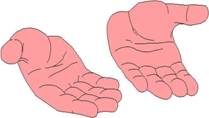
==========================================================================================================
I wish life was (were) like the Oscars so I could just play soft music whenever I want someone to stop talking and go away.
| Name(s) - F18 | Assignments | Strategies for testing report findings in class on 10/1 |
| ANDREA-(DD-SHU) / LEON-(DD-Chathan) / ISMAILabs | Perceptions of
Crowding & Density: incl. Gender
Differences ‘/ Hall’s zones of interaction |
replication / triangulation / team
experimentation
√ |
| MELANIE-(Advisor'd offc) / OLIVIA(____)/ DESIREE(Coach) | Dominance messages via space incl. 'Territorial Quandries" | √ |
|
JESSICA / DAVID(clsmt's
seats) / VERONICA(wine
spill/take plates) / KATHERINE(adjacent
trdml) / JARMAL |
Territoriality: incl. Primary
Space vs Secondary Space / |
√ |
| GENE(Family Grtg:C/C) / TEMPEST(Family Grtg:C/C) | Conversational Distance across cultures: incl. incl Hall’s zones of interaction | √ |
| JOCELYN / EMILY | Conference tables: the circle vs the rectangular vs the oval | " " |
| REPORT FORMAT:
EACH person = 1-2 minutes |
||
| <1> which specific pattern from Chap 5 ( or "Space Speaks") you chose to investigate | ||
| <2> How you went about "testing" the pattern | ||
| <3> your results/findings & whether they correspond to the text's assertions of what to expect. | ||
| PRAGMATICS of SEMIOTICS ( Nonverbal Skill Building ) | ||
| S.L.'s | S.C.'s | S.R.'s |
| discussion
leaders: David & Olivia {keep full class disc. going for at least 10 minutes} |
discussion leaders:
Katherine & Melanie {keep full class disc. going for at least 10 minutes} |
discussion
leaders: Tempest & Jessica {keep full class disc going for at least 10 minutes} |
|
sample discussion topics:
(1) Is this image a valid example for the
specified criteria?
(2) Which of the eight Chap. 4 qualities apply to the effect(s) of the semiotics in this image? (3) What are the possible impacts of these semiotics on regular "inhabitants"? (4) What are the possible impacts of these semiotics on visitors? (5) Bottom line, are the semiotics in this image essential for navigating one's way through this environment/building? (6) Are there any other semiotics in this image that we've missed? |
sample discussion topics:
(1) Is this image a
valid example for the specified criteria?
[re-read assgnment sheet] (2) Why was this considered "best" Do we all agree? (3) Which of the eight Chap. 4 qualities apply to the effect(s) of the semiotics in this image? (4) What are the possible impacts of these semiotics on regular "inhabitants"? (5) What are the possible impacts of these semiotics on visitors? (6) Bottom line, are the semiotics in this image essential for navigating one's way through this environment/building? (7) Are there any other semiotics in this image that we've missed? |
sample
discussion topics:
(1) Is this image a valid example for the specified
criteria?[re-read assgnment sheet]
(2) Why was this considered "best" Do we all agree? (3) Which of the eight Chap.4 qualities apply to the effect(s) of the semiotics in this image? (4) What are the possible impacts of these semiotics on regular "inhabitants"? (5) What are the possible impacts of these semiotics on visitors? (6) Bottom line, are the semiotics in this image essential for navigating one's way through this environment/building? (7) Are there any other semiotics in this image that we've missed? |
submitted
image: {dual duty}
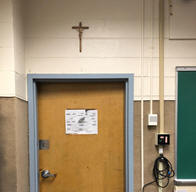 |
submitted image
1: 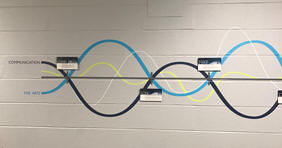 |
submitted image 1:  |
 |
submitted image
2: 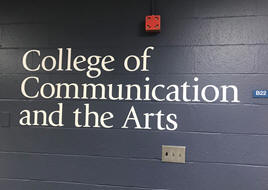 |
submitted image 2: 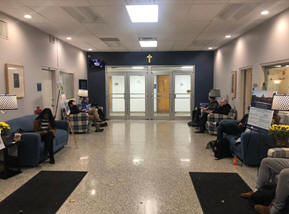 |
BELOW = LEFTOVER &/or DELAYED ITEMS TO BE SQUEZZED IN, if possible:
| orig = wk: 6 |
be prepared to select your choice for the
KINESICS IN ACTION
class activity.
|
| orig = wk: 6 |
*
be prepared to submit your 2 choices for the
"(almost) 360 degrees of
Kinesics"
assignment.page
.
|
page last updated 12/4/18